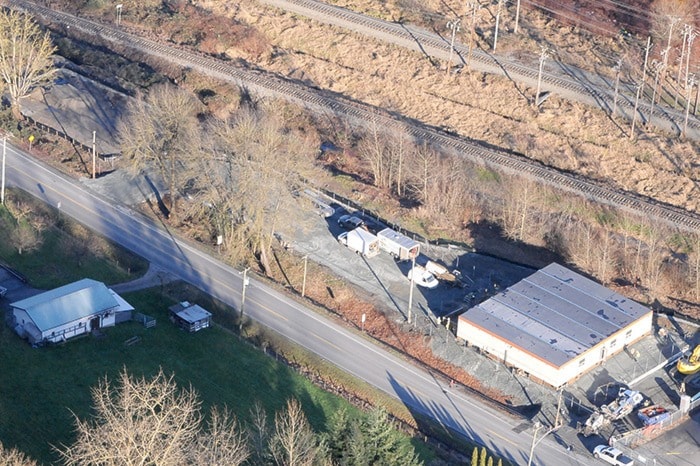The new homeless shelter in Abbotsford is now full.
The temporary winter facility’s 40 funded beds were filled by Dec. 31, according to Lookout Emergency Aid Society, the group running the shelter. Most clients are still staying there, and the shelter continues to run at capacity.
It took only 10 days for the building to go from an empty construction-trailer building on Dec. 21 to a full facility. Residents were brought into the low-barrier shelter gradually, to ensure those living there would have time to settle in and get along.
The facility is running on $450,000 in operating funds from BC Housing. Made of six construction trailers on a city-owned lot on Riverside Road, the facility cost about $750,000 in city funds to construct. It will stay open until the end of April and is expected to reopen again next winter.
The shelter wasn’t big enough to take in every homeless person in Abbotsford, with a number of outdoor camps still remaining around the city – some by choice.
A tent city still squats on swaths of city-owned land on Gladys Avenue, although a few people have left. Most Gladys tent city residents weren’t interested in moving to the shelter, according to Nate McCready of the local Salvation Army, who works on the homeless outreach team collaborating with the shelter.
He said an initial meeting with a tent city spokesperson went well, but by Dec. 31 the group decided the shelter wasn’t for them.
“They said they’re happy where they are,” said McCready. “They understand they are welcome ... but they’re just not looking to come in.”
City spokesperson Katherine Treloar said, “we are pleased the shelter is filling the need in our community,” and did not comment on whether the full shelter would impact city efforts to bring the Gladys camp to a close.
A temporary winter shelter in Victoria, which opened on Jan. 5, took a different approach. Called “My Place,” that facility in an unused gym gives 40 residents private tents to sleep in, rather than an open sleeping area like the one utilized at Riverside. It was specifically opened in an attempt to remove a tent city on a provincial courthouse lawn.
“People who were at the tent city don’t respond very well to shelters,” said Grant McKenzie of Our Place Society, which operates the Victoria facility. Our Place took into account tent city residents’ requests for more privacy, and the ability for couples to be housed together. My Place is a low-barrier shelter. Drug use is not allowed inside and tent checks are performed to enforce this rule.
As for the origins of the new shelter clients in Abbotsford, McCready said the outreach team only connects with people who are already in this area, and his team doesn’t collect detailed background information. When the shelter was at 28 residents on Dec. 30, Lookout staff said most people staying there were from Abbotsford. Full data for all 40 residents isn’t available, but at Lookout’s other shelters in the Lower Mainland, about 70 per cent come from the local community and 30 per cent from elsewhere.
Neither the outreach team nor Lookout maintain a wait list, but they said beds in a shelter at capacity come open occasionally as some residents leave.
Lookout executive director Shayne Williams said they’ll refer (and help transport) people with roots in other communities to shelters elsewhere, but they don’t refer anyone to another city based on space.
Most people stay at Lookout’s shelters for about 25 days, Williams said. Most stay for a short time, and only once, though a minority have a harder time getting on their feet and stay for extended periods.
There are also 25 shelter beds at the Salvation Army’s Centre of Hope in Abbotsford. In extreme weather, when people sleeping outside are in danger, more one-night beds are made available in church basements and community buildings.
